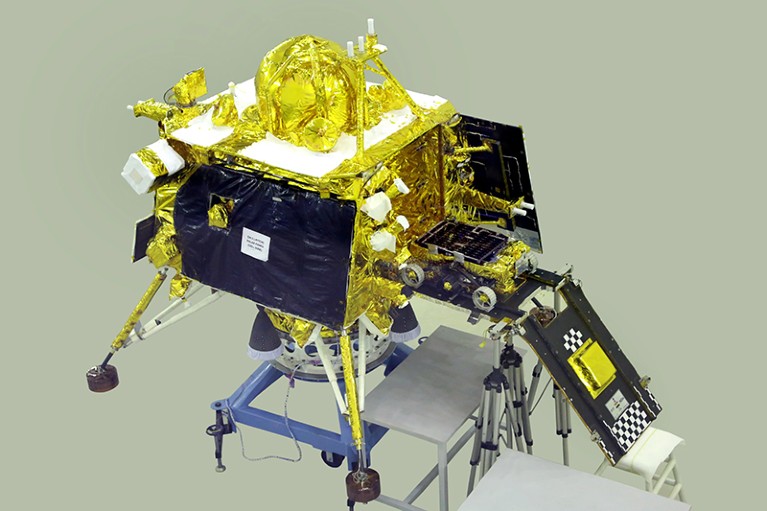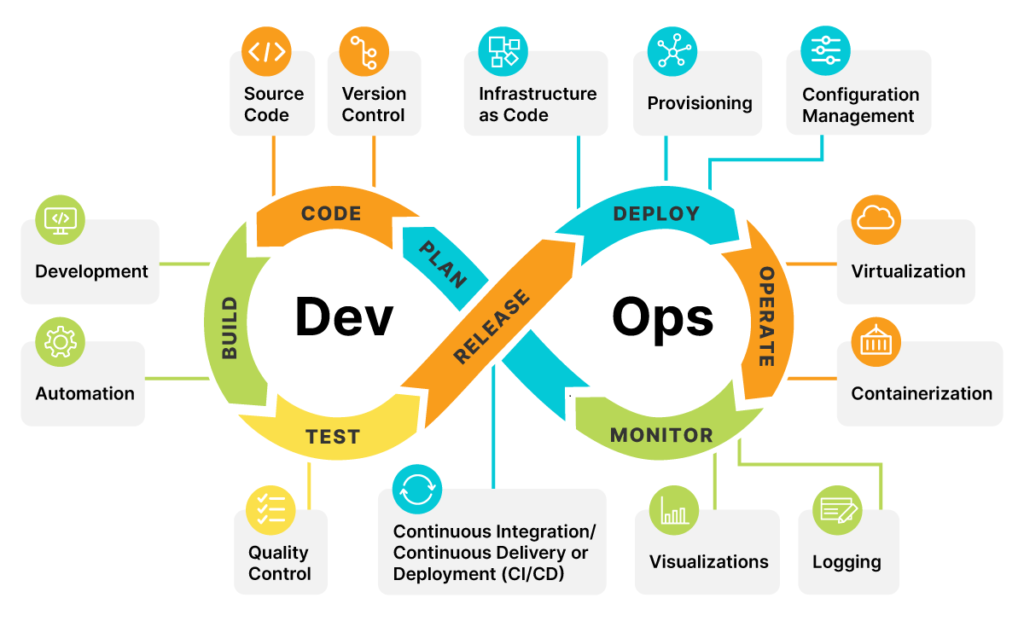Role of DevOps in Space Exploration with a focus on Chandrayaan-3
 Raghav Gupta
Raghav Gupta
DevOps is the methodology of integrating Software development and operations to make it more efficient, less time-consuming, and reducing delays in the software development lifecycle by automating the building, testing, and deployment stages of SDLC. It plays an essential role within software teams.

There are a number of software used for space missions from launching to landing, some of which are made public and some are not. Let us learn a bit about the software which were used in the Chandrayaan-3 mission.
Software used in Chandrayaan-3
Telemetry, Tracking, and Command (TTC) software: This software is used to control the spacecraft and send commands to it. It also receives telemetry data from the spacecraft, which is data about the spacecraft's health and status.
Guidance, Navigation, and Control (GNC) software: This software is used to navigate the spacecraft and keep it on its intended course. It also uses sensors to measure the spacecraft's position and velocity.
Flight dynamics software: This software simulates the spacecraft's flight and predicts its behavior. It is used to design the spacecraft's trajectory and to test the spacecraft's systems.
Simulation software: This software is used to simulate the lunar environment and to test the spacecraft's systems in that environment.
Data processing software: This software is used to process the data that is collected by the spacecraft's instruments. It also generates images and maps of the lunar surface.
Communication software: This software is used to communicate with the spacecraft. It sends commands to the spacecraft and receives telemetry data from it.
Ground support software: This software is used to control the ground stations that communicate with the spacecraft. It also processes the data that is received from the spacecraft.
These are just some of the softwares that were used in the Chandrayaan-3 mission. The software used in space missions is highly complex and requires a lot of expertise to develop and maintain. The software developers and engineers who work on these projects must have a deep understanding of the spacecraft's systems and the lunar environment. The software used in space missions is essential for the success of these missions. It allows the spacecraft to be controlled and navigated, the data to be processed, and the images and maps to be generated. Without this software, space missions would not be possible.
Role of DevOps in Chandrayaan-3

Software testing is essential for the success of any space mission, but it is even more critical for Chandrayaan 3 because the lander and rover will be exposed to the harsh conditions of space.
The software used in Chandrayaan 3 must be rigorously tested to ensure that it can withstand the rigors of space travel. The Software Testing Lifecycle can also be divided into different levels of testing, depending on the depth and breadth of testing that is performed:
Unit Testing: This level of testing focuses on testing individual units of code. Unit testing ensures that each unit of code functions as intended and contributes to the overall reliability of the software.
Integration Testing: This level of testing focuses on testing how different units of code interact with each other.
System Testing: This level of testing focuses on testing the entire software application as a whole.
Acceptance Testing: This level of testing is performed to check the software’s reliability and durability in the expected condition in this case, the lunar conditions.
The software testing for Chandrayaan 3 has been a rigorous and demanding process, but it is essential to ensure that the software can perform flawlessly in the harsh environment of space.
The software testing team has used a variety of methods to simulate the lunar and space environments, including using a lunar simulant and a virtual reality environment.
The software testing team has worked tirelessly to ensure that the software is ready for the harsh conditions of space.
While testing the software, at every stage, the code is changed multiple times, thus going through the plan, code, build, test, release, deploy, operate in a lunar simulator, and monitor phases back and forth. Without DevOps methodologies and best practices, this would have been a tedious and time-consuming task which would have further delayed the mission (23rd August was chosen while keeping in mind the availability of sunlight in the region).
Role of DevOps in Other Space Missions
Apart from this, DevOps is becoming increasingly important in space missions, as software is becoming more and more critical to their success.

In spacecraft development: DevOps automates spacecraft software development and testing, helping to reduce the development cycle and enhance the quality of spacecraft software.
For instance, NASA is leveraging DevOps to build the Artemis spacecraft, the first woman and first color person to land on the moon.
In spacecraft operation: DevOps is helping to optimize existing spacecraft operations, improving efficiency and reliability.
For instance, SpaceX is employing DevOps to run its fleet of SpaceX Dragon spacecraft, which transport cargo and cosmonauts to the International Space Station.
In space technology development: DevOps is enabling the development of cutting-edge space technologies, including AI and ML, which can enable autonomous spacecraft to navigate and operate autonomously without human intervention.
As space missions continue to grow in complexity and software dependency, DevOps will continue to play an increasingly important role as it can help shorten the space mission development cycle, enhance software quality, and improve team collaboration.
In the grand theater of space exploration, where precision and reliability are paramount, the role of DevOps emerges as a guiding star, illuminating the path to success. The intricate dance between software development and operational efficiency, showcased brilliantly in missions like Chandrayaan-3, serves as a testament to the indispensable nature of DevOps methodologies.
As we've delved into the complex software ecosystem of Chandrayaan-3, it becomes abundantly clear that every line of code, every testing phase, and every deployment decision are integral threads woven into the fabric of triumph. The marriage of technology and teamwork has birthed not only ingenious software solutions but also a testament to human ingenuity and dedication.
Moreover, the role of DevOps transcends Chandrayaan-3, resonating across the cosmos of space exploration. From automating spacecraft development, optimizing operations, to forging the path for autonomous spacecraft powered by AI and ML, DevOps stands as the driving force behind the evolution of space technology.
As humanity's quest to explore the cosmos deepens and missions grow in complexity, the role of DevOps shines brighter than ever before. It shortens development cycles, enhances software quality, and fosters seamless collaboration among teams. Just as the stars guide celestial navigation, DevOps guides the journey from innovation to realization, ensuring that our dreams of the stars become tangible realities.
In the end, the legacy of DevOps in space exploration mirrors the very essence of exploration itself: an unyielding spirit, a thirst for progress, and an unbreakable bond between visionaries and their creations.
As we direct our gaze toward the heavens, let us be mindful that amid the cosmic silence, the artistry of DevOps conducts a grand performance, harmonizing the intricate steps of human endeavor into a cosmic ballet of progress and discovery where India's presence is a testament to boundless aspiration.
India on the Moon, Emotions even beyond! :)
Subscribe to my newsletter
Read articles from Raghav Gupta directly inside your inbox. Subscribe to the newsletter, and don't miss out.
Written by
